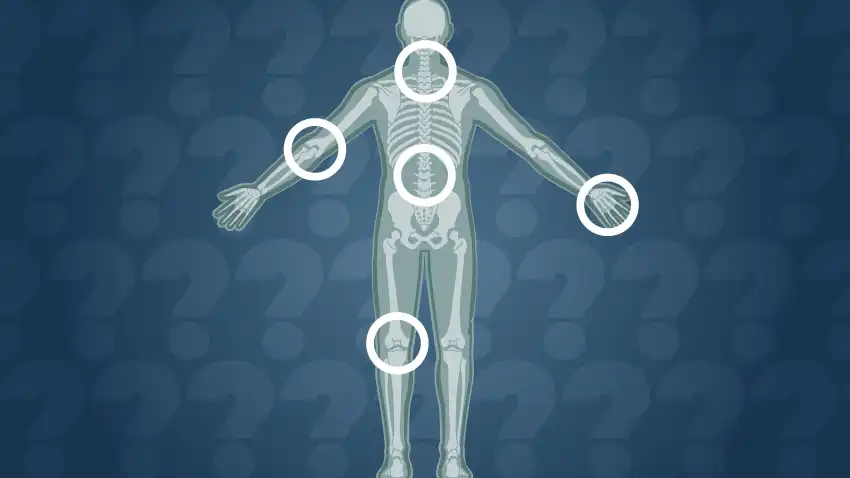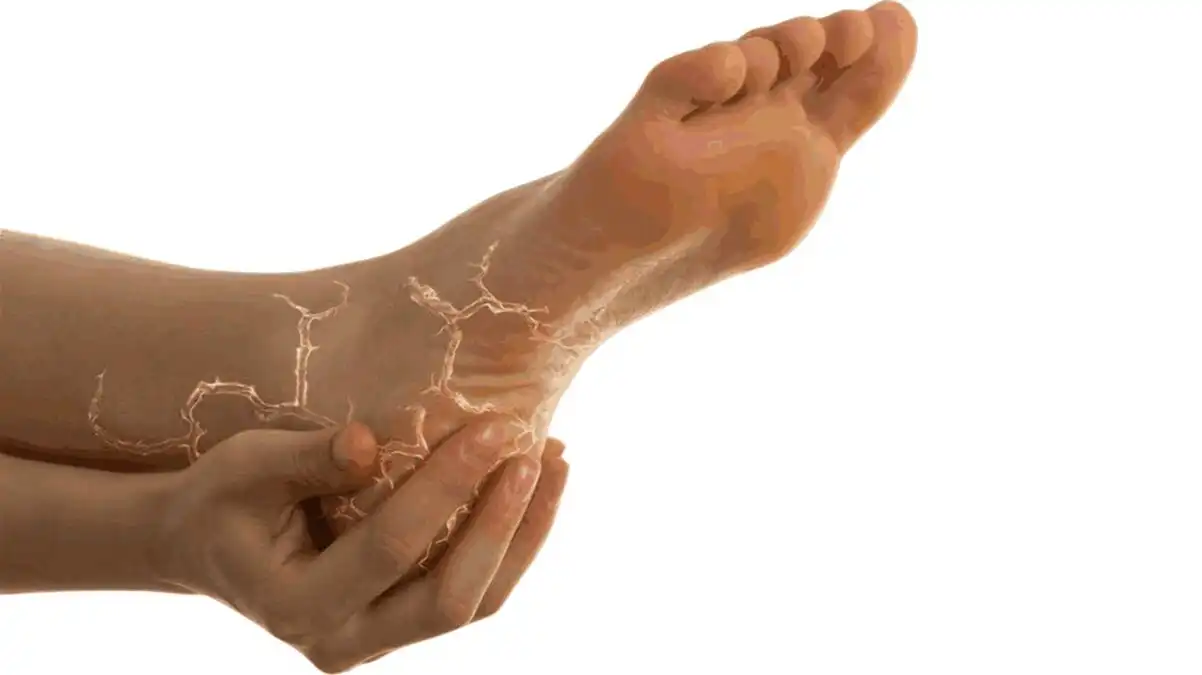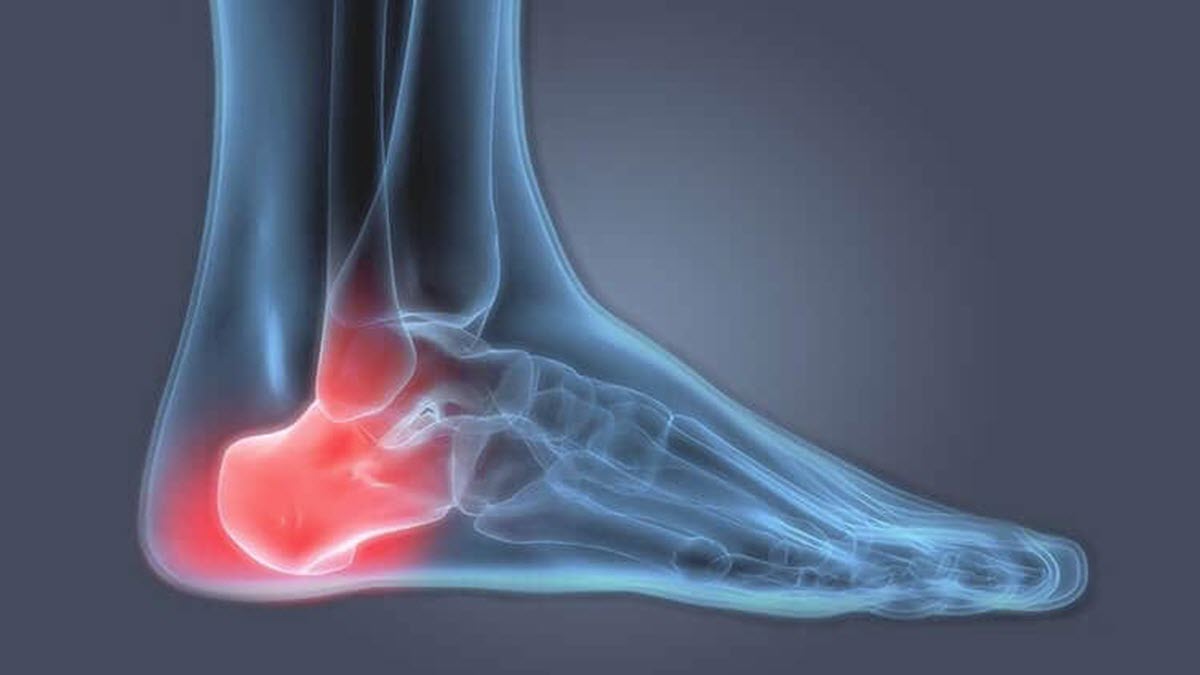Introduction
Ankle sprains are among the most common injuries, often resulting from sporting activities, accidents or even simple clumsy movements. This injury occurs when the ligaments responsible for the stability of the ankle bones experience excessive stress, which can lead to them being stretched or torn. The consequences of this condition are notable, causing significant pain and a notable reduction in mobility.
The context in which these sprains occur is vast, ranging from sports fields to everyday accidents. The impact of this injury is not limited to physical pain, but also extends to functional implications, affecting the affected person’s ability to move. Therefore, a thorough understanding of the underlying causes, symptoms observed and the various treatment options available is crucial to ensure effective recovery.
The causes of ankle sprains are multiple, often linked to external forces applied abnormally during physical activities. Whether it’s a sudden twist during a soccer game or a simple slip on a slippery surface, the vulnerability of ankle ligaments to excessive stress is evident. Symptoms of this injury include sharp pain, swelling, and sometimes bruising, signaling the need for a thorough medical evaluation.
Managing ankle sprains involves a holistic approach, from initial intervention to complete rehabilitation. First aid, such as rest, icing, compression, and elevation, can help alleviate the initial inflammation. However, a medical consultation is essential to assess the severity of the sprain and determine the best treatment approach. More advanced methods, such as physical therapy, may be recommended to restore strength and flexibility to the ankle, reducing the risk of recurrence.

Causes of Ankle Sprains
Ankle sprains, among the most common injuries, originate from a variety of circumstances and mechanisms. The main causes of these sprains are often linked to external forces applied abnormally during physical activities. Sports activities, with their rapid and sometimes unpredictable movements, are common triggers for ankle sprains. Suddenly twisting the foot on a playing field can place undue stress on the ligaments, causing these stabilizing structures to stretch or tear.
Everyday accidents also represent a significant source of ankle sprains. A simple slip on a slippery surface, an unexpected fall, or even incorrect positioning of the foot when walking can generate unexpected forces, testing the strength of the ankle ligaments. The vulnerability of this joint to sudden movements and direct impacts makes it prone to injury, even in non-sporting contexts.
Individual predisposition also plays a role in the occurrence of ankle sprains. Certain factors, such as congenital ligament laxity, can increase the likelihood of sustaining this injury. Likewise, muscular imbalances or anatomical abnormalities can create conditions conducive to sprains. It is crucial to recognize that these pre-existing factors can interact with external circumstances, increasing the overall risk of an ankle sprain.
Additionally, environmental conditions such as unstable surfaces, uneven terrain, or improper footwear can contribute to the occurrence of ankle sprains. An uneven playing field or slippery surfaces can create situations conducive to slips and falls, thereby compromising ankle stability. Wearing shoes that are poorly fitted or in poor condition can also compromise the support needed for this joint, increasing the risk of sprains.
- Sudden Movements: Ankle sprains commonly occur during sudden movements, such as quick pivots, sudden changes in direction, or landing incorrectly after a jump.
- Uneven Terrain: Walking, running or performing physical activities on uneven or unstable surfaces can increase the risk of ankle sprains.
- Inadequate Footwear: Poorly fitting shoes without adequate support can contribute to sprains by compromising foot and ankle stability.
- Sports Activities: Sports such as basketball, soccer, football, and other activities requiring rapid changes of direction increase the risk of ankle sprains.
- History of Sprains: Having a previous ankle sprain increases the likelihood of re-injury, as ligaments may remain weakened after previous healing.
- Anatomical Factors: Some individuals may have a genetic predisposition to anatomical abnormalities that increase the risk of ankle sprains.
- Lack of Warm-up: Not warming up properly before physical activity can make muscles and ligaments less flexible and more susceptible to injury.
- Muscle Fatigue: Tired muscles are less able to provide adequate support, increasing the risk of ankle sprains.
Symptoms of Ankle Sprains
Symptoms of ankle sprains offer a varied clinical picture, reflecting the complexity of this common injury. Pain, often the first indicator, can vary in intensity, from moderate discomfort to sharp pain, depending on the severity of the sprain. This pain is usually localized to the ankle region and may be exacerbated when mobilizing the joint or applying pressure.
Swelling is a distinctive symptom, resulting from fluid accumulation in the affected area. This swelling, combined with tissue inflammation, contributes to the feeling of heat in the ankle area. Swelling may be visible to the naked eye and may impair joint mobility.
Bruises, or contusions, are often seen following an ankle sprain. These colored marks result from the rupture of small blood vessels under the skin and are particularly visible when the sprain is accompanied by a torn ligament. How bruising changes over time can provide insight into the severity of the injury.
Decreased ankle mobility is a characteristic symptom, especially in cases of moderate to severe sprains. Pain, swelling, and physical restrictions help restrict movement of the joint, sometimes making it difficult to perform normal daily activities.
Besides these obvious symptoms, less tangible manifestations can also accompany ankle sprains. A feeling of weakness in the joint or increased instability may be felt, especially when attempting to bear body weight on the affected ankle. A cracking or tearing sound at the time of injury may also be reported, indicating a possible ligament tear.
It is crucial to note that the course of symptoms can vary from one individual to another and often depends on the severity of the sprain. Although symptoms may lessen over time, a medical consultation is always recommended to thoroughly evaluate the situation and determine the optimal treatment plan.
- Pain: Pain is one of the most common symptoms. It may be felt immediately after the injury and may be sharp, throbbing, or dull depending on the severity of the sprain.
- Swelling: Swelling around the ankle is common. It can appear quickly after the sprain due to the accumulation of fluid in the tissues.
- Bruises: Bruises, or bruises, can develop around the ankle due to the accumulation of blood from damaged small blood vessels.
- Stiffness: The ankle may become stiff due to swelling and inflammation, limiting range of motion.
- Difficulty Walking: Pain and swelling can make it difficult to put weight on the injured ankle, leading to limping or difficulty walking.
- Instability: A feeling of instability or weakness in the ankle may occur, especially when attempting support or movement.
- Local Heat: The area around the ankle may become warm to the touch due to inflammation.
Long-term symptoms or complications
Ankle sprains can cause short-term symptoms as well as long-term complications if not properly treated. Here is a list of long-term symptoms and possible complications associated with ankle sprains:
Long-Term Symptoms
- Persistent pain: Some people may experience chronic pain following an ankle sprain, even after initial healing.
- Joint stiffness: An untreated sprain can lead to decreased joint mobility, with a feeling of stiffness.
- Ankle Instability: Severe sprains can weaken ligaments, causing ankle instability. This can increase the risk of further sprains.
- Chronic swelling: Some individuals may continue to experience recurring ankle swelling even after initial healing.
- Feelings of weakness: The perception of weakness in the ankle may persist, especially when performing demanding activities.
Possible Complications
- Post-traumatic arthritis: A severe sprain can damage joint cartilage, leading to chronic inflammation and eventually post-traumatic arthritis.
- Tarsal tunnel syndrome: A sprain can increase the risk of nerve compression, leading to tarsal tunnel syndrome with symptoms such as tingling, numbness and pain.
- Development of calluses: Compensations due to pain can lead to changes in gait, promoting the development of calluses or corns.
- Muscle weakness: Prolonged immobility and inadequate rehabilitation can lead to muscle atrophy and persistent weakness.
- Postural problems: Changes in gait to avoid pain can lead to posture problems, affecting other parts of the body.
Diagnosis and Treatment
Diagnosis of Ankle Sprains
- Clinical Examination: A healthcare professional will perform a physical examination to assess the severity of the sprain, including palpation of the affected area, measuring range of motion, and observing gait.
- Medical Imaging: X-rays may be taken to rule out a fracture. In some cases, an MRI (magnetic resonance imaging) may be recommended to evaluate the ligaments in more detail.
Treatment of Ankle Sprains
- RICE:
- Rest: Avoid putting weight on the injured ankle.
- Ice : Apply ice to reduce swelling.
- Compression: Use a compression bandage to limit swelling.
- Elevation: Elevate the ankle to reduce swelling.
- Drugs :
- Over-the-counter pain relievers, such as ibuprofen, can help reduce pain and inflammation.
- Immobilization :
- Splints or orthotics may be recommended to stabilize the ankle while it heals.
- Re-education :
- Rehabilitation exercises, under the supervision of a healthcare professional, are essential to strengthen muscles, improve stability and promote full recovery.
- Shoes and Orthotics:
- Appropriate shoes and orthotics may be recommended to support the ankle and prevent future injuries.
- Surgery (In Serious Cases):
- For severe sprains with significant ligament damage, surgery may be considered to repair the damaged ligaments.
Healing Time for Ankle Sprains
The length of time it takes to heal from an ankle sprain depends on several factors, including the severity of the injury, the immediate treatment applied, adherence to medical advice, and the individual’s propensity for recovery. Ankle sprains can generally be categorized into three severity levels: mild, moderate and severe.
- Mild Sprain:
- Healing Time: Typically, a mild sprain can heal in a few days to a few weeks.
- Treatment: Rest, ice application, compression, elevation (RICE method), followed by light rehabilitation.
- Moderate Sprain:
- Healing Time: A moderate sprain may require two to six weeks to heal.
- Treatment: In addition to the RICE method, light immobilization, rehabilitation exercises, and sometimes anti-inflammatories may be recommended.
- Severe Sprain:
- Healing Time: Severe sprains may take several weeks to months to fully heal.
- Treatment: Stricter immobilization, perhaps a splint or boot, and intensive rehabilitation. In some severe cases, surgery may be necessary.
It is crucial to follow the advice of your healthcare professional to ensure proper healing. Prompt and adequate treatment, combined with targeted rehabilitation, can speed up the recovery process and reduce the risk of long-term complications, such as stability problems or recurrent sprains.
Prevention Strategies
- Strengthening Exercises: Incorporate ankle, calf and leg muscle strengthening exercises into your workout routine. This helps stabilize joints and prevent sprains.
- Improved Proprioception: Balance and proprioception exercises, such as standing on one leg or using unstable surfaces, can help develop better awareness of body position, thereby strengthening the ankle.
- Stretching: Incorporate stretching into your exercise routine to maintain flexibility in the muscles and tendons around the ankle.
- Appropriate Footwear: Wear appropriate footwear for the specific physical activity. Sports shoes should provide good support and adequate grip.
- Warm-up: Before any physical activity, make sure you warm up properly. This includes light stretching and joint movements to prepare the muscles for exercise.
- Movement Technique: When participating in sports activities or exercises, be sure to use correct movement technique, especially when changing direction.
- Terrain Aware: Be aware of your surroundings, especially on uneven surfaces. Avoid engaging in physical activities on uneven terrain without appropriate protection or support.
- Overall Strengthening: Work on overall body strengthening to improve coordination and stability, which can reduce the risk of falls and sprains.
- Orthotics: If you have a predisposition to ankle sprains, consider using orthotics or ankle supports for additional support.
- Rehabilitation: If you have previously suffered an ankle sprain, follow your healthcare professional’s rehabilitation recommendations to minimize the risk of recurring injuries.
Rehabilitation and Recovery
Strengthening Exercises for Preventing Ankle Sprains
- Point of Toe Elevation:
- Standing, rise on your tiptoes, contracting your calf muscles.
- Hold the position for a few seconds, then slowly lower back down.
- Repeat the exercise several times.
- Strengthening the Peroneal Muscles:
- Tie an elastic band around a stationary object and the outside of the foot.
- In a seated position, spread your legs and perform eversion movements (moving away from the outer edge of the foot).
- Ankle Dorsal Flexion:
- Sit on the floor with your legs extended in front of you.
- Bend your ankles to bring your toes toward you.
- Hold the position for a few seconds, then release.
- Balance on one leg:
- Stand on one leg, lifting the other slightly off the ground.
- Hold the position for as long as possible, working on balance.
- Alternate between legs.
Stretches for Ankle Sprain Prevention
- Calf Stretch:
- Place the foot to be stretched behind you, with your heel on the floor.
- Slightly bend the knee of the back leg.
- Hold the position to stretch the calf.
- Stretching the Peroneal Muscles:
- Sit on your heels with your buttocks resting on your feet.
- Lean back slightly, keeping your hands behind you to stretch the peroneal muscles.
- Stretching the Achilles Tendons:
- Standing, place one foot forward, bend your knee slightly.
- Keep the heel of the back foot on the ground to stretch the Achilles tendons.
- Ankle Rotation:
- Sit or lie down and rotate your ankles clockwise and then counterclockwise.
- Seated Ankle Stretch:
- Sit with your legs extended in front of you.
- Flex your toes toward you to stretch your ankle muscles.
Perform these exercises and stretches regularly, especially before physical activities, to strengthen and soften the muscles and ligaments around the ankle, helping to prevent sprains.
Conclusion
In conclusion, ankle sprains are common injuries requiring immediate attention and an appropriate management approach. From rest and rehabilitation to specialized medical care, management of ankle sprains varies depending on the severity of the injury. Prevention, early recognition of symptoms and appropriate intervention are essential for a full recovery. By understanding ankle anatomy, risk factors and different treatment options, we can help minimize the impact of ankle sprains on daily life and promote a quick and effective recovery.
References
- Koutras C, Antoniou SA, Jäger M, Heep H. Acute Injuries Sustained By Racing Drivers: A Cross-Sectional Study. Acta Orthop Belg. 2017 Dec;83(4):512-520. [ PubMed ]2.
- Swords M, Brilhault J, Sands A. Acute and Chronic Syndesmotic Injury: The Authors’ Approach to Treatment. Foot Ankle Clin. 2018 Dec;23(4):625-637. [ PubMed ]3.
- Slater K. Acute Lateral Ankle Instability. Foot Ankle Clin. 2018 Dec;23(4):523-537. [ PubMed ]4.
- Carto C, Lezak B, Varacallo M. StatPearls [Internet]. Stat Pearls Publishing; Treasure Island (FL): Aug 8, 2023. Anatomy, Bony Pelvis and Lower Limb: Distal Tibiofibular Joint (Tibiofibular Syndesmosis) [ PubMed ]5.
- Bridgman SA, Clement D, Downing A, Walley G, Phair I, Maffulli N. Population based epidemiology of ankle sprains attending accident and emergency units in the West Midlands of England, and a survey of UK practice for severe ankle sprains. Emerg Med J. 2003 Nov;20(6):508-10. [ PMC free article ] [ PubMed ]6.
- Doherty C, Bleakley C, Delahunt E, Holden S. Treatment and prevention of acute and recurrent ankle sprain: an overview of systematic reviews with meta-analysis. Br J Sports Med. 2017 Jan;51(2):113-125. [ PubMed ]7.
- Wang DY, Jiao C, Ao YF, Yu JK, Guo QW, Xie Case Series of 1169 Patients. Orthop J Sports Med. 2020 May;8(5):2325967120922821. [ PMC free article ] [ PubMed ]8.
- Mauntel TC, Wikstrom EA, Roos KG, Djoko A, Dompier TP, Kerr ZY. The Epidemiology of High Ankle Sprins in National Collegiate Athletic Association Sports. Am J Sports Med. 2017 Jul;45(9):2156-2163. [ PubMed ]9.
- Ponkilainen VT, Laine HJ, Mäenpää HM, Mattila VM, Haapasalo HH. Incidence and Characteristics of Midfoot Injuries. Foot Ankle Int. 2019 Jan;40(1):105-112. [ PubMed ]10.
- Khan IA, Varacallo M. StatPearls [Internet]. Stat Pearls Publishing; Treasure Island (FL): Aug 8, 2023. Anatomy, Bony Pelvis and Lower Limb, Foot Talus. [ PubMed ]11.
- Ehrlichman LK, Gonzalez TA, Macaulay AA, Ghorbanhoseini M, Kwon JY. Gravity Reduction View: A Radiographic Technique for the Evaluation and Management of Weber B Fibula Fractures. Arch Bone Jt Surg. 2017 Mar;5(2):89-95. [ PMC free article ] [ PubMed ]12.
- Kerkhoffs GM, Rowe BH, Assendelft WJ, Kelly K, Struijs PA, van Dijk CN. Immobilization and functional treatment for acute lateral ankle ligament injuries in adults. Cochrane Database Syst Rev. 2002;(3):CD003762. [ PubMed ]13.
- Vuurberg G, Hoorntje A, Wink LM, van der Doelen BFW, van den Bekerom MP, Dekker R, van Dijk CN, Krips R, Loogman MCM, Ridderikhof ML, Smithuis FF, Stufkens SAS, Verhagen EALM, de Bie RA, Kerkhoffs GMMJ . Diagnosis, treatment and prevention of an ankle sprains: update of an evidence-based clinical guideline. Br J Sports Med. 2018 Aug;52(15):956. [ PubMed ]


























